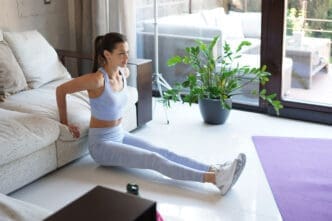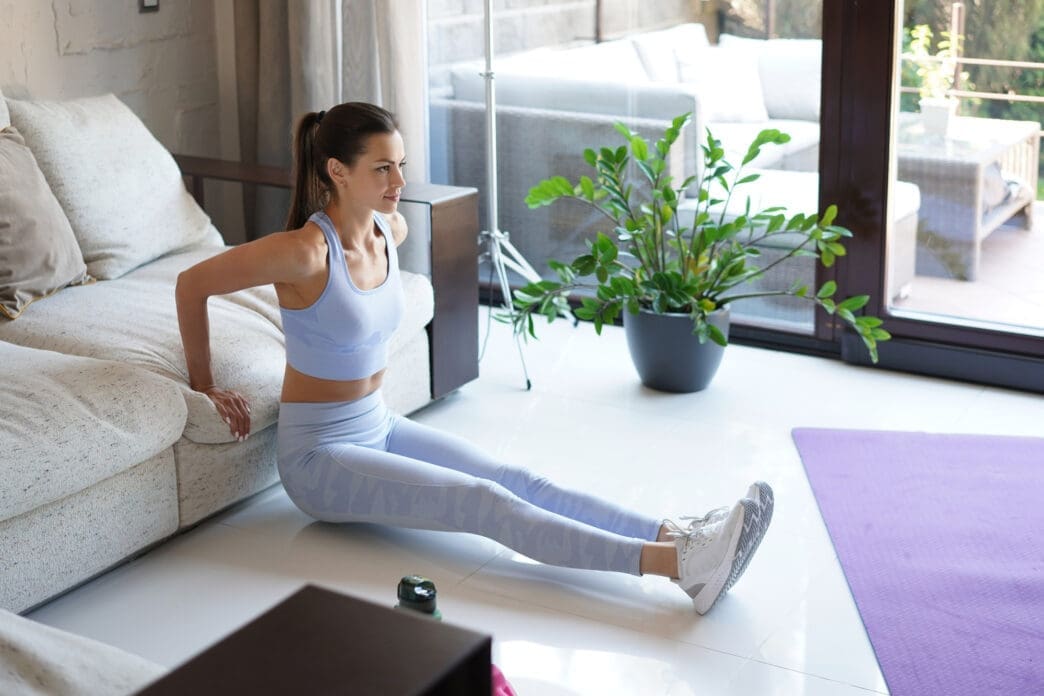A Quick Takeaway
- Urban runners can effectively maintain and improve their training regimen with focused, efficient indoor workouts in small apartments, complementing outdoor runs.
- Apartment workouts are crucial for runners, offering cross-training, flexibility, consistency, and focusing on key muscle groups to enhance performance and prevent injuries.
- Effective indoor routines for runners include bodyweight strength training, high-intensity interval training (HIIT) for cardio, flexibility exercises, and core strengthening, all adaptable to limited space and minimal equipment.
The Story Behind the Trend
- Many urban runners face the dual challenge of limited living space and demanding schedules, often leading to the misconception that effective training requires extensive outdoor areas or a fully equipped gym; however, targeted indoor workouts are essential for building foundational strength, improving cardiovascular health, and enhancing flexibility to prevent injuries and ensure consistent progress, complementing outdoor runs despite space constraints.
How to Make It Work for You
- The article emphasizes that urban runners can effectively maintain and enhance their training regimens despite limited living space by utilizing targeted indoor workouts. These apartment-based routines are crucial for building foundational strength, improving cardiovascular health, and increasing flexibility, ultimately leading to better outdoor running performance and reduced injury risk, ensuring consistent progress regardless of external factors.
The Community View
- Many urban runners perceive limited living space as a significant barrier to effective training, often believing that comprehensive workouts are only possible outdoors or in a dedicated gym.
- The article argues that small apartment workouts are highly effective and essential for runners, providing critical cross-training, injury prevention, and consistent fitness development, proving that space constraints do not have to limit training aspirations.
For the dedicated runner living in a cozy urban apartment, the idea of maintaining a rigorous training regimen might seem like a contradiction in terms. However, maximizing your fitness and improving your running performance doesn’t require vast open spaces or a fully equipped gym. Instead, runners can leverage the power of focused, efficient indoor workouts right within their small living areas, complementing outdoor runs in vibrant locales like Miami or any city beyond. These targeted exercises, designed to build strength, enhance cardiovascular health, and improve flexibility, are essential for injury prevention and sustained progress, ensuring that a tiny apartment never limits a runner’s big aspirations.
The Urban Runner’s Space Challenge
Many runners, particularly those in bustling cities, face the dual challenge of limited living space and demanding schedules. A small apartment can feel restrictive when envisioning a dynamic workout, leading some to believe that effective training is only possible outdoors or in a dedicated fitness center. This common misconception often deters individuals from embracing cross-training or strength work, which are critical components of a well-rounded running program.
The reality is that space constraints don’t have to be a barrier to fitness. With creativity and an understanding of bodyweight mechanics, even a few square feet can be transformed into a powerful training zone. The key lies in selecting exercises that are highly effective, require minimal equipment, and can be performed safely within a limited area.
Why Apartment Workouts are Essential for Runners
Incorporating indoor workouts offers numerous benefits beyond simply overcoming space limitations. These sessions provide invaluable cross-training opportunities that directly translate to improved running performance and reduced injury risk. They allow runners to focus on specific muscle groups often neglected during typical runs, such as the core, glutes, and hips.
Furthermore, apartment workouts offer flexibility. They can be performed regardless of weather conditions, time of day, or access to outdoor routes. This consistency is vital for building and maintaining fitness, ensuring that a runner’s progress isn’t derailed by external factors. They also serve as an excellent warm-up or cool-down routine for outdoor runs, preparing the body for activity or aiding in recovery.
Strength Training: The Foundation of Running Endurance
Strength training is paramount for runners, building the power, stability, and resilience needed to endure long distances and prevent injuries. Many effective strength exercises require no equipment and can be performed in a small space.
Bodyweight Powerhouses
Focus on compound movements that engage multiple muscle groups, mimicking the demands of running. Exercises like squats, lunges (forward, reverse, and lateral), and step-ups (using a sturdy chair or step) build powerful legs and glutes. Push-ups, planks, and glute bridges strengthen the upper body and core, crucial for maintaining good running posture.
To progress these exercises, runners can increase repetitions, slow down the movement for greater time under tension, or add a slight pause at the point of maximum contraction. For regression, modify the movement, such as performing knee push-ups or reducing the range of motion for squats.
Cardio Alternatives: Keeping the Heart Pumping Indoors
While nothing fully replaces the specific demands of running, indoor cardio alternatives can maintain cardiovascular fitness and provide a high-intensity boost without requiring a treadmill or vast space.
High-Intensity Interval Training (HIIT)
HIIT workouts are incredibly efficient for small spaces. Burpees, mountain climbers, high knees, butt kicks, and jumping jacks can elevate your heart rate quickly. Perform each exercise for 30-45 seconds, followed by a short rest, and repeat for several rounds. This format burns calories, improves endurance, and boosts metabolic rate.
A jump rope is another excellent, space-efficient cardio tool. Even in a small area, a jump rope can provide a vigorous workout that improves coordination, footwork, and cardiovascular health. Incorporate various jumps, such as single-leg hops or high knees, to diversify the routine.
Flexibility and Mobility: The Unsung Heroes
Flexibility and mobility work are often overlooked but are critical for preventing stiffness, improving range of motion, and reducing the risk of common running injuries. These can easily be integrated into an apartment routine.
Dynamic Warm-ups and Static Stretches
Begin your workout with dynamic stretches like leg swings, arm circles, and torso twists to prepare your muscles for activity. Conclude with static stretches, holding each for 20-30 seconds, focusing on hamstrings, quads, hip flexors, and calves. Yoga or Pilates-inspired movements, adapted for small spaces, can also significantly improve flexibility and core strength.
A yoga mat is often the only equipment needed for these sessions, providing a comfortable and defined space for movement. Consider using a small resistance band for added glute and hip activation during warm-ups.
Core Power: The Runner’s Anchor
A strong core is the foundation of efficient running, providing stability, improving posture, and transferring power from your upper body to your legs. Many effective core exercises require minimal space.
Targeting Abdominal and Back Muscles
Planks are a versatile core exercise, with variations like side planks, plank jacks, and plank with shoulder taps that challenge stability from different angles. Dead bugs, bird-dog, and hollow body holds are excellent for strengthening the deep core muscles without putting strain on the back. Incorporate these into your routine 2-3 times a week.
Consistency in core work will lead to noticeable improvements in running form, reducing unnecessary movement and increasing overall efficiency. A strong core helps prevent the mid-run slump and keeps you upright and powerful through the finish line.
Making the Most of Limited Space
Transforming a tiny apartment into an effective workout zone requires a few strategic considerations. Clear a small, dedicated area, moving furniture if necessary, to ensure you have enough room to move freely and safely. A yoga mat can define your workout space and provide cushioning.
Minimal equipment can greatly enhance your workouts. Resistance bands, a small foam roller, and a jump rope are compact, affordable, and incredibly versatile. Utilize online resources, such as fitness apps or YouTube videos, which often feature small-space workouts and provide guidance on form and routine structure. Setting a consistent schedule and finding an accountability partner or virtual fitness community can also boost motivation and adherence.
Big Runs, Wherever You Are
Whether you’re hitting the scenic coastal paths of Miami, weaving through the bustling streets of New York, or exploring the quiet trails of a suburban park, the principles of effective training remain universal. Indoor apartment workouts are not a compromise but a powerful complement to your outdoor running adventures. They build the underlying strength, cardiovascular resilience, and flexibility that make your outdoor runs more enjoyable, efficient, and injury-free.
Embrace the challenge of training in a small space as an opportunity to get creative and discover new ways to push your limits. By integrating these targeted workouts into your routine, you’ll find that a tiny apartment is more than enough room to cultivate big running dreams and achieve remarkable fitness milestones, no matter where your running shoes take you.








